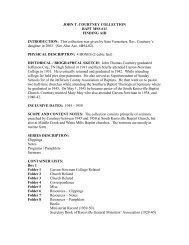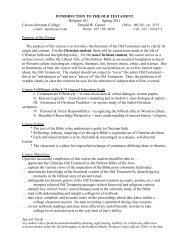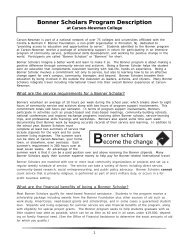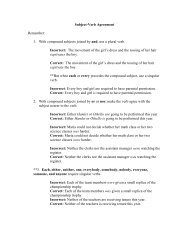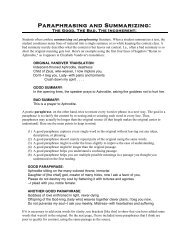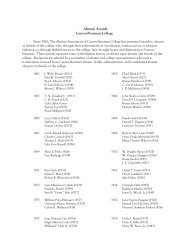a comparative analysis of louis durey and francis poulenc's settings ...
a comparative analysis of louis durey and francis poulenc's settings ...
a comparative analysis of louis durey and francis poulenc's settings ...
Create successful ePaper yourself
Turn your PDF publications into a flip-book with our unique Google optimized e-Paper software.
24<br />
d. Le dauphin<br />
Dolphins, you play in the sea,<br />
But the waves are always bitter.<br />
Do I sometimes laugh with joy<br />
Life is still cruel.<br />
The dolphin, the nineteenth creature in the procession, is the first <strong>of</strong> the sea<br />
dwellers. As the poem reinforces, the dolphin is a symbol <strong>of</strong> naivety <strong>and</strong> joy. Ernst<br />
Lehner notes that the dolphin “was considered a kindly sea monster in antiquity, servant<br />
<strong>of</strong> the gods <strong>and</strong> helper to man.” 50 In Greek mythology, Apollo cherished the dolphin—<br />
he <strong>and</strong> other gods rode dolphins on the waves <strong>of</strong> the sea.<br />
Specific to this poem, the dolphin plays in the sea despite its bitterness. The poet<br />
draws a parallel between the life <strong>of</strong> the dolphin <strong>and</strong> his own life. Although enduring a<br />
cruel existence, the poet still finds reasons to laugh with joy, as the dolphin plays in the<br />
sea despite its treacherous waves. Wilfred Mellers draws a comparison between the<br />
dolphin <strong>and</strong> Don Pedro (<strong>of</strong> “Le dromadaire”) in that they are both adventurers through<br />
“uncharted territories.” 51 The poet, once again, admires the adventurous quality <strong>of</strong> the<br />
creature <strong>and</strong>, in a way, lives vicariously through the dolphin’s joyful frolicking through<br />
the bitter sea.<br />
The dolphin woodcut portrays the dolphin in its natural element—the ocean.<br />
There is a steamship in the background, with smoke billowing out from its funnel. The<br />
“bitter waves” are portrayed in a choppy manner, surrounding the boat <strong>and</strong> the dolphin.<br />
The bow wave in front <strong>of</strong> the dolphin indicates that the dolphin is moving forward, which<br />
<br />
50 Ernst <strong>and</strong> Johanna Lehner, A Fantastic Bestiary: Beasts <strong>and</strong> Monsters in Myth <strong>and</strong> Folklore (New York:<br />
Tudor, 1969), 137.<br />
51 Mellers, Francis Poulenc, 4.



